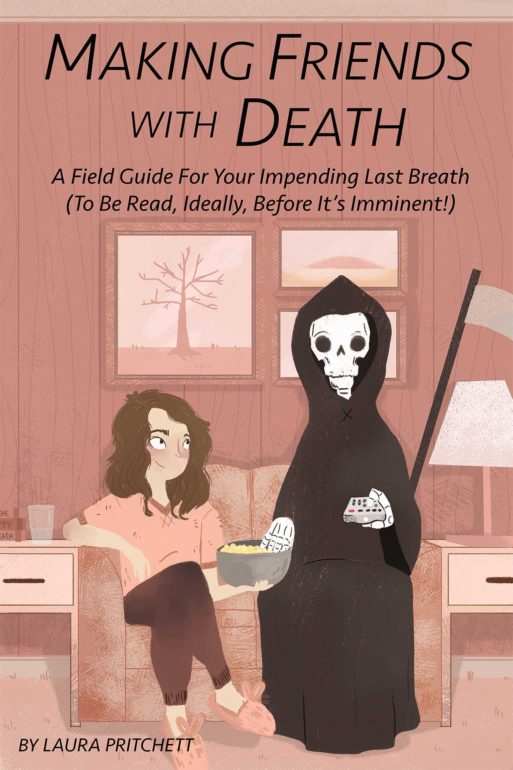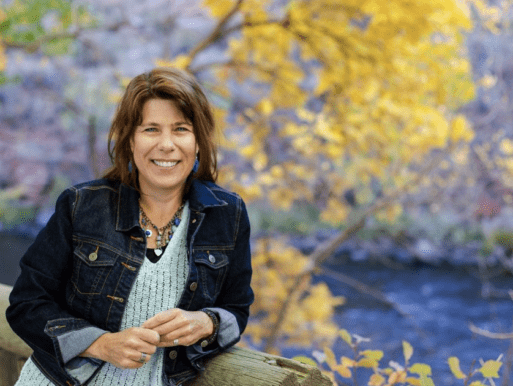
Published by Viva Editions, distributed by Simon and Schuster 2017
Laura Pritchett, author of five novels, “came from a chaotic, strange, ranch-y, farm-y, science-y family,” which made her “familiar enough with life” and helped her “get familiar enough with death” by the time she was a teenager. Helping her mother dig up an old skeleton that was blocking an irrigation ditch on their land is the formative experience Pritchett tells to begin her field guide, “Making Friends with Death.”

Laura Pritchett, winner of a PEN USA Award
In her field guide, Pritchett seeks to help the readers get comfortable with the idea of dying. While the introduction features stories from her childhood and adolescence, her incredibly helpful exercises are littered throughout this book. Her journey to make friends with death came with a feeling of being “heartbroken with the idea that [she] had to die” as she experienced the skeleton that afternoon with her mother.
Years later, Pritchett experienced what she calls a “medical extravaganza,” and again was struck by how much she did not want to die. When she recovered and felt like herself again, the author realized she needed to get her Death Act together. Since she simply cannot escape death, she wanted to find a way to do it well. Making friends with death seems to be the most natural way to move toward the end with grace.

A Field Guide in Three Parts
Part One: Death! A How-To Guide (A Crash Course in the Art of Dying)
Pritchett spends the first four chapters giving the reader lots of exercises and prep work for how to prepare for death. People can gain insight on how to prepare for their own death and the deaths of others in their lives. The writer also gives views from medical professionals and ideas on sudden deaths versus meandering ones.
Part Two: Life! (A Crash Course in the Art of Living)
Once Pritchett gives advice on the art of dying, she’s ready to help the reader really live. She invites people to live fully from the perspective of being comfortable with dying. Accepting death as inevitable and a natural destination allows for a new freedom in life. Pursuing the joy of living can become the focus because death will come no matter what a person does to avoid it.
Part Three: Homework
What would a real friendship be without one that makes you do homework? Pritchett ends her guide with plenty of homework assignments. These range from helping readers write their own epitaph to writing apologies and farewell letters to planning their own celebration of life. By thinking through these final moments, good-byes and what it will be like to no longer be alive, readers can grow even closer in their relationship with death.
BONUS Part Four: The Best of the Best
Pritchett compiles lists of the best films, books, and music about death. She gives readers great resources to view, read, and listen to as they get to know their new friend, Death.
Sometimes irreverent, often funny, and brimming over with lots of heart, Pritchett’s “Making Friends with Death” offers readers challenges as she invites them to become familiar with and, perhaps, fond of death. She hopes her book will prepare all readers for their last sacred breath.

 “Making Friends with Death” by Laura Pritchett
“Making Friends with Death” by Laura Pritchett


 “As Tears Go By” by Marianne Faithfull
“As Tears Go By” by Marianne Faithfull

 Funeral Favors Offer Visitors a Tangible Memento
Funeral Favors Offer Visitors a Tangible Memento















